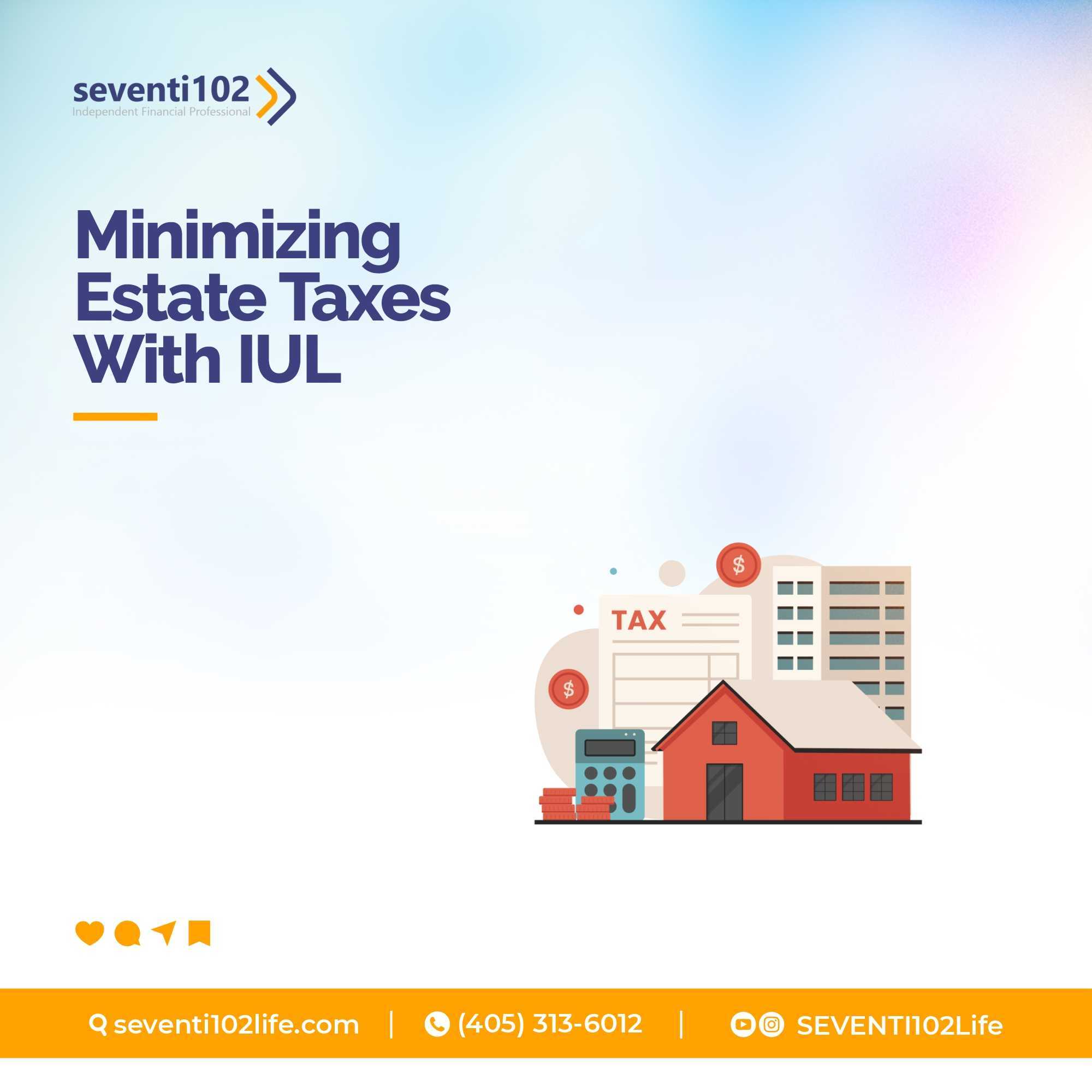In today’s uncertain economic environment, preparing for a secure financial future is more important than ever. One successful strategy gaining popularity is the Indexed Universal Life (IUL) insurance policy. Incorporating IULs into your financial strategy can provide a unique combination of life insurance protection and the opportunity for cash value development based on market indices. This article investigates how IUL can be an important part of your financial strategy, including its benefits, considerations, and integration into a comprehensive plan.
Summary
Indexed Universal Life (IUL) provides both insurance protection and the possibility for cash value increase. This article looks into the subtleties of IULs, outlining their benefits, considerations, and how they might fit into your entire financial strategy.
Benefits of Incorporating IUL into Your Financial Plan

Indexed Universal Life (IUL) insurance has several appealing benefits, making it an excellent addition to any financial plan. For starters, IUL offers prospective cash value increase based on the success of a stock market index, such as the S&P 500. This feature helps policyholders to benefit from market gains while remaining protected from market downturns, as IULs often have a floor that precludes losses caused by index decreases.
IUL policies provide flexibility in premium payments. Policyholders can vary the amount and frequency of premium payments within specific limits, allowing for adaptation to changes in financial circumstances or investing goals. This flexibility extends to the death benefit, which can frequently be altered over time, providing choices to enhance or decrease coverage in response to changing needs.
Another big advantage of IULs is their tax-deferred growth. The cash value accumulation in the policy increases tax-free until withdrawals or loans are made. This tax advantage can boost overall investment returns when compared to taxable accounts, particularly over time.
Policyholders can also access the cash value during their lifetime by taking out policy loans or withdrawing it. This liquidity provision can provide extra income or emergency money without triggering immediate tax repercussions, as long as the insurance is in effect.
Overall, the mix of potential market-linked returns, premium and benefit flexibility, tax breaks, and liquidity possibilities makes IUL an appealing option for those looking for both life insurance protection and long-term financial growth.
Considerations Before Opting for IUL

Before adding Indexed Universal Life (IUL) into your financial strategy, you must carefully analyze three critical elements to ensure that it is consistent with your financial objectives and risk tolerance.
First, understand the expenses of an IUL policy. These may include mortality charges, administrative fees, and expenses associated with the underlying index options or investment accounts. These charges can have an impact on the policy’s overall performance and returns, so it’s critical to have a clear grasp of how they will affect future cash value growth.
Second, be aware of any surrender fees associated with your policy. Surrender charges normally occur if you withdraw funds from the policy or surrender it fully within a specified time frame after purchase. These charges can be substantial in the early years of the policy and may limit liquidity, so it is important to assess your potential need for access to cash value in the short term.
Third, understand how interest crediting works under the IUL policy. The rise of cash value is linked to the success of a specific stock market index, however the method used to calculate interest credits varies across policies. Some rules may limit the maximum amount of interest credited, affecting long-term development potential. Others may use a participation rate or spread, which influences the growth rate.
Consider the insurance features and options available. Some IUL policies include riders or other advantages that increase the policy’s flexibility or give additional protection against certain risks. Some examples include accelerated death benefit riders, which let you to collect a portion of the death benefit if diagnosed with a terminal disease, or waiver of premium riders, which continue premium payments if you become disabled.
Finally, consider your entire financial status and aspirations to evaluate whether IUL is a good fit for you. While IUL has the potential for cash value development and flexibility, it may not be appropriate for everyone. Understanding your risk tolerance, investment horizon, and other financial priorities will allow you to make an informed decision about whether IUL fits into your overall financial strategy.
By carefully considering these factors and talking with a financial advisor or insurance specialist, you can assess whether incorporating IUL into your financial strategy is appropriate for achieving your long-term financial goals.
How IUL Fits into Retirement Planning

Indexed Universal Life (IUL) can be a valuable tool in retirement planning since it provides a flexible source of tax-advantaged income and prospective growth. Unlike standard retirement plans such as 401(k)s or IRAs, IULs provide numerous distinct advantages that can supplement existing retirement savings methods.
One of the key advantages of incorporating IULs into retirement plans is tax-deferred growth. Cash value accumulation in an IUL policy grows tax-free, just like in other permanent life insurance policies. This tax benefit enables policyholders to develop money more effectively than taxable investment accounts, particularly over longer periods of time.
IUL policies allow for more flexible access to money following retirement. Policyholders can take policy loans against the cash value, which can provide additional income without triggering immediate taxable events. These loans can be repaid over time, providing greater flexibility in managing cash flow during retirement.
In addition, the death benefit offered by an IUL can be a great tool in retirement planning. Beneficiaries can use the death benefit to offset estate planning costs or leave a bequest for loved ones, as it is normally income tax free. This can be especially useful for persons wishing to efficiently transmit money to future generations.
Furthermore, IUL plans can be designed to offer a steady income stream throughout retirement. Some plans have optional riders or income benefits that guarantee a minimum level of income regardless of market performance, allowing for more stability in retirement income planning.
It is crucial to note that adding IULs into retirement plans necessitates careful assessment of policy characteristics, costs, and potential dangers. To determine whether an IUL is appropriate for their entire financial strategy, policyholders should consider their risk tolerance, investing goals, and retirement income requirements.
Individuals can determine whether an IUL is a good option to enhance their retirement assets and give additional financial stability throughout their retirement years by talking with a financial counselor or insurance professional.
Tax Implications of IUL

Indexed Universal Life (IUL) insurance provides various tax benefits, making it an appealing option for anyone looking for both life insurance coverage and tax-efficient asset growth.
One notable tax advantage of IULs is their tax-deferred growth. The cash value accumulation in an IUL policy grows tax-deferred, which means you will not pay income taxes on the cash value growth until you withdraw funds from the policy. This tax deferral allows your money to compound more quickly than in taxable investment accounts, increasing the overall return on investment over time.
Policyholders can access the cash value during their lifetime via policy loans or withdrawals without incurring immediate taxable events. Policy loans are typically not taxable as income, as long as the policy remains in force. Withdrawals may be subject to income tax if they exceed the amount of premiums paid into the policy (referred to as “basis”).
Beneficiaries of an IUL policy receive a death benefit that is generally income tax free. This tax-free status applies regardless of the size of the death benefit distribution, making IULs an effective tool for estate planning and wealth transfer.
It is crucial to note that the tax laws and regulations regulating life insurance plans, including IULs, are complicated and susceptible to change. Individuals contemplating IUL for tax purposes should speak with a certified tax counselor or financial professional to see how these benefits relate to their personal financial circumstances.
Individuals can attain long-term financial security and tax efficiency by carefully incorporating the tax-deferred growth, access to cash value, and tax-free death benefit aspects of the IUL.
Using IUL for Wealth Transfer

Indexed Universal Life (IUL) insurance can be an effective tool for wealth transfer and estate planning, giving a tax-efficient method of passing assets to heirs or beneficiaries.
One significant advantage of adopting IUL for wealth transfer is the tax-free death benefit. When the insured dies, the policy’s death benefit is normally paid to beneficiaries income tax-free. This can give recipients with a significant sum of money to meet estate taxes, funeral expenses, or to leave a financial legacy without triggering income tax liabilities.
IUL plans can be designed to maximize the death benefit while reducing the incidence of estate taxes. Individuals can avoid the probate process by carefully structuring the policy’s ownership and beneficiary designations. This can help to speed asset transfers and save administrative costs involved with estate settlement.
Furthermore, IUL policies provide flexibility in policy design and premium payments, allowing policyholders to adapt the policy to specific wealth transfer objectives. For example, some policies allow you to increase the death benefit over time or attach riders that increase the policy’s value for beneficiaries.
It is crucial to emphasize that, while IULs can be an effective wealth transfer vehicle, individuals should weigh the costs, risks, and policy characteristics before adopting them into their estate planning strategy. Policy costs, such as mortality charges and administration fees, might have an impact on the policy’s total worth and should be considered alongside the possible benefits of tax-free asset transfer.
Individuals can determine whether IUL is appropriate for their estate planning goals and develop a strategy that maximizes the benefits of this insurance policy for future generations by working with a financial advisor or estate planning professional.
Evaluating Risks Associated with IUL

Indexed Universal Life (IUL) insurance has significant benefits, but it is critical to understand and assess the risks connected with these products before adopting them into your financial plan.
One major risk to consider is the possibility of insurance expenditures and charges. Mortality charges, administration fees, and expenses tied to the underlying index options or investment accounts are all common costs associated with IUL plans. These expenses can diminish the overall return on investment and slow the increase of the policy’s cash value over time.
IUL policies are subject to market risk. While IUL offers potential cash value growth linked to the performance of a stock market index, such as the S&P 500, the policy’s growth is often subject to caps, participation rates, or spreads that can limit the amount of interest credited to the cash value. Market downturns or volatility can also impact the policy’s growth potential, potentially leading to lower returns than expected.
Another risk to consider is the impact of policy loans on the cash value and death benefit. Policyholders who borrow against the cash value of an IUL policy accrue interest on the loan balance, which can reduce the policy’s overall cash value and death benefit over time if not repaid. Additionally, outstanding loans can impact the policy’s ability to grow and accumulate value, potentially affecting the long-term sustainability of the policy.
Surrender charges can also be a significant risk associated with IUL policies, especially in the early years of the policy. Surrender charges typically apply if you withdraw funds from the policy or surrender it entirely within a certain period after purchase. These charges can reduce liquidity and limit your ability to access the cash value of the policy in the short term.
Finally, policyholders should evaluate how changing economic conditions or policy stipulations may affect the performance of an IUL policy. Changes in interest rates, index performance, or the financial stability of the insurance firm can all have an impact on the policy’s cash value and total worth.
Individuals considering IUL should thoroughly study and understand the risks involved with these insurance. You may make an informed choice about whether an IUL is a good fit for your long-term financial goals by evaluating your risk tolerance, investing goals, and financial condition.
Consulting with a financial advisor or insurance specialist can help you understand the benefits and limitations of IUL in comparison to other options, allowing you to make an informed decision about incorporating IUL into your overall financial plan. You can book a free strategy session with us at Seventi102 Life. We will be glad to be of assistance and help you navigate the intricacies of your policy to make the most of it.
Conclusion
Indexed Universal Life (IUL) can give a flexible solution for long-term financial stability. Understanding its benefits, concerns, and dangers will allow you to make an informed decision about whether IUL is appropriate for your wealth accumulation, retirement planning, and estate preservation goals.
IUL can also potentially provide a safety net for you and for your loved ones. You should check out this video on how to safeguard your future and that of your loved ones against unforseen circumstances like job loss or illnesses.
FAQs
Question 1: What is Indexed Universal Life (IUL) insurance?
Answer: Indexed Universal Life (IUL) insurance is a type of permanent life insurance that offers a death benefit and a cash value component tied to the performance of a stock market index.
Question 2: How does IUL differ from other types of life insurance?
Answer: Unlike traditional whole life or term life insurance, IUL provides potential cash value growth based on index performance, with flexibility in premium payments.
Question 3: What are the tax benefits of IUL?
Answer: IUL offers tax-deferred growth on its cash value and tax-free death benefits to beneficiaries, making it a tax-efficient wealth transfer tool.
Question 4: Is IUL suitable for retirement planning?
Answer: Yes, IUL can be used for retirement planning by providing supplemental income through policy loans or withdrawals, along with potential growth linked to market indexes.
Question 5: What should I consider before buying an IUL policy?
Answer: Considerations include costs, interest crediting methods, surrender charges, and policy features to ensure it aligns with your financial goals and risk tolerance.
We hope you gained much from this article. Our previous article was on examining different IUL scenarios. You can check it out as it contains a lot of valuable information.




























































